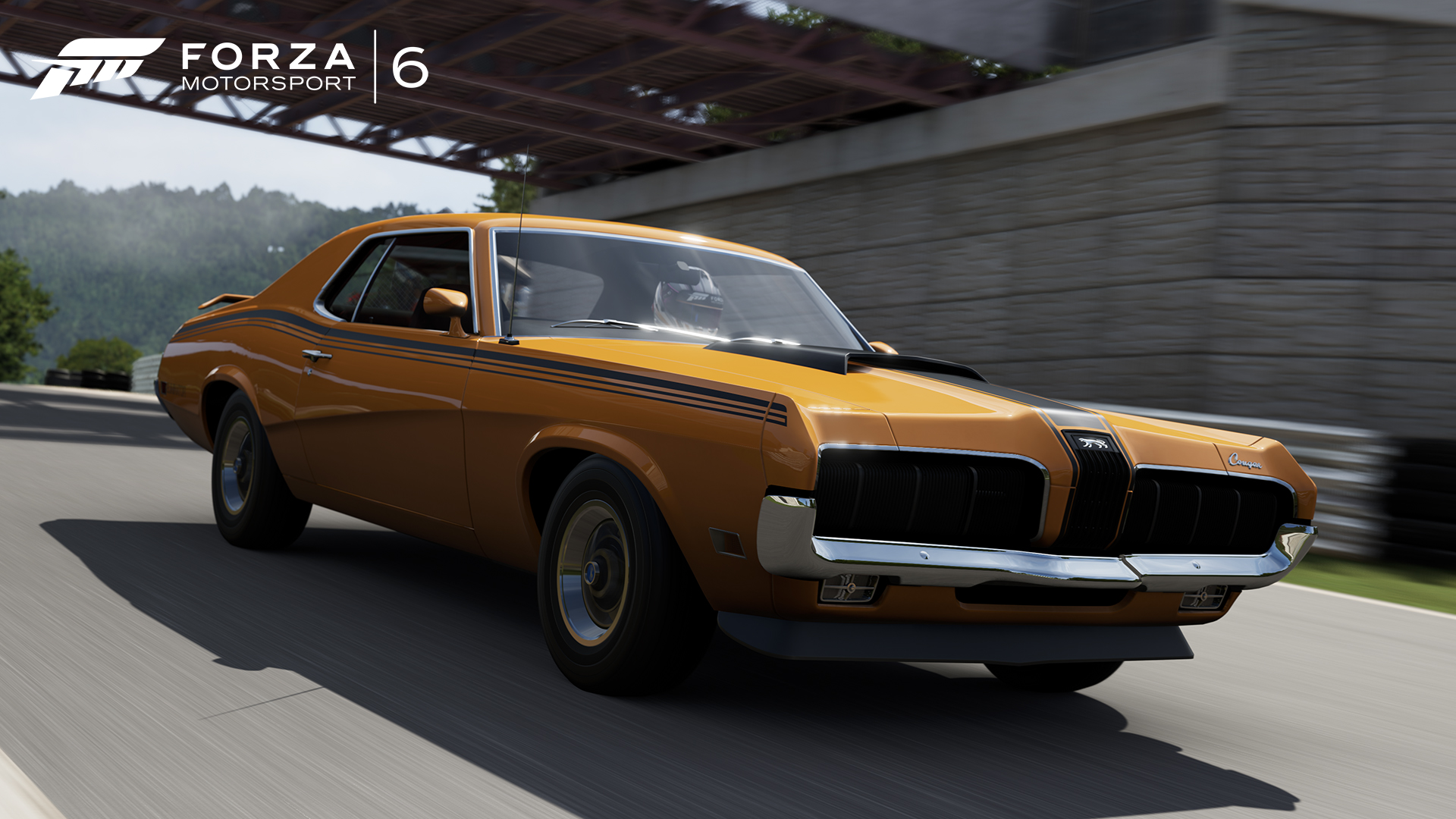
Lucky Number Week Seven Brings American Muscle to the Forza Motorsport 6 Garage
Seven days in a week, seven seas, seven continents, and now week seven of the Forza garage – and yes, it’s a winner. It’s now less than a month away from the launch of Forza Motorsport 6 on Sept. 15, and we are revealing with some more highly anticipated cars.
We are calling this American Muscle car week, but those V8 classics may be overshadowed by the announcement of one of the most amazing production cars to hit the road – the BAC Mono is coming to Forza 6.
Aussies and anyone else who wants amazing speed coupled with unparalleled cornering ability will appreciate the Xbox liveried #17 V8 Supercar raced by Marcus Ambrose.
Now take a detailed look at these spotlight cars and check the rest of the list for what you have been looking for – there are a few surprises in there.
2014 BAC Mono
It has no doors and no windscreen. It has a third pedal, but you don’t have to use it. The BAC Mono is completely unique – part jet fighter, part Formula car and in a league of its own. The Mono is one of the only single-seater production cars that’s not only street legal, but ready to conquer any track. Words can’t prepare you for the driving experience that will have you singing the Mono’s praises. Briggs Automotive Company (BAC) is headed by brothers Neil and Ian Briggs, who both have deep histories in design and innovation. The Mono is a realization of their lifelong dream to challenge convention and define new limits in vehicle performance. With only 50 models built in 2014, the Mono is a thrilling driving experience that few have tasted.
2015 Ford #17 Xbox Racing Ford Falcon FG X
The Dick Johnson Racing Team Penske #17 Ford Falcon was driven by V8 Supercar champion Marcus Ambrose in his highly-anticipated return to the Aussie V8 Supercar series in 2015. Ambrose spent the last several years in America driving in the NASCAR Sprint Cup series. When Team Penske decided to expand operations in the Aussie V8s, the opportunity for the much-loved driver to return to the place of his initial success excited fans. The #17 Falcon debuted in its Xbox Racing livery as a wildcard entry at the 2014 Sydney 500. While Ambrose’s racing ambitions were tempered by the challenges of re-entering one of the highest levels of road racing, the performance of this V8 Supercar is something any Forza fan can appreciate.
1969 Dodge Charger Daytona HEMI
While the Charger Daytona Hemi is closely related to the Plymouth Superbird (and from a few steps back, virtually indistinguishable), it actually predates the better-known car by about a year. The “aero” cars were created to eclipse the Ford Torino Talladega, which was outcompeting the older Charger 500. The only way to go faster was either more power or a clever design. When the engineers did the math, they realized that power was not an option, so to the wind tunnel they went. The aero gear – the nosecone, flush rear window and functional spoilers – added a lot of weight, but lowered the drag coefficient to just 0.28, making it incredibly fast. In fact, the Charger Daytona was the first NASCAR entry to do more than 200 mph, in the hands of Buddy Baker in 1970. Street cars were needed to homologate the racing variant, so Dodge built 505 street versions. As for the rear spoiler, there’s a controversy about whether its extreme height was for aerodynamics or to allow the trunk to open. Ultimately, it is functional and the trunk opens just fine, so it’s a moot point.
1970 Mercury Cougar Eliminator
The 1970 Mercury Cougar Eliminator is a big bruiser of a cat from the height of the muscle car craze, building off of the successful pony car formula of the Cougar’s little brother, the Mustang. The functional ram-air intake on the hood barely hides a massive, NASCAR-inspired 428 Super Cobra Jet engine. Like many muscle cars of the era, the Eliminator’s engine was seriously underrated by Mercury, and the 428 big-block was good for more than 400 horsepower right out of the box. Nearly too much for the street, it is hard to miss the Eliminator’s bold spoiler, blacked-out grille and headlight covers, and eye-searing color combinations like Competition Orange and Lime Green. The Eliminator was the vision of Larry Shinoda, whose work had previously inspired the ’63 Corvette Stingray and who was the father of the Boss 302 Mustang. The Eliminator is a real threat at stoplights or on the track, so when an Eliminator looms in your rear-view mirror, you’d best get out of the way.
Accompanying our spotlight muscle cars are these iconic American rides:
1970 Chevrolet Corvette ZR-1
1970 Dodge Challenger R/T
1995 Chevrolet Corvette ZR-1
1970 Chevrolet Camaro Z28
2014 Jeep Grand Cherokee SRT
1991 Jeep Grand Wagoneer
1969 Chevrolet Nova Super Sport 396
1967 Chevrolet Chevelle Super Sport 396
2012 Dodge Charger SRT8
2002 Chevrolet Corvette Z06
1987 Pontiac Firebird Trans Am GTA
1979 Chevrolet Camaro Z28
2014 Local Motors Rally Fighter
1970 Buick GSX
1966 Chevrolet Nova Super Sport
1968 Dodge Dart HEMI Super Stock
1953 Chevrolet Corvette
And for good measure, take a look at this mix of imports, exotics and racecars coming to Forza Motorsport 6:
2015 Honda #15 Rahal Letterman Lanigan Racing IndyCar
2015 Lotus E23
2009 Ferrari 458 Italia
1987 Ferrari F40
2005 Dodge SRT4 ACR
2015 Nissan IDx NISMO
1952 Fiat 8V Supersonic
2013 Toyota GT86
1991 Mazda #18 Mazdaspeed 787B
1970 Datsun 510
2004 Honda Civic Type-R
1992 Toyota Celica GT-Four RC ST185
2014 Lamborghini Urus
1968 Lancia Fulvia Coupé Rallye 1.6 HF
1986 MG Metro 6R4
Swing by ForzaMotorsport.net for the full list of cars announced to date for Forza Motorsport 6, launching Sept. 15.
